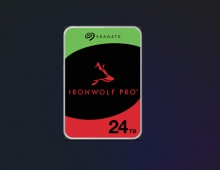Seagate ST380811AS
3. Benchmarks
In order to test the Seagate ST380811AS, we connected it to an Abit IL8 motherboard, with the latest BIOS and software updates installed. We used a number of benchmarking software to test the performance, in both reading and writing.
First, we loaded HD Tach RW, which provides both reading and writing tests over the full surface area of the HDD. As you can see, the performance of the tested drive was very good, starting at 75MB/sec at the start, and ending at 35MB/sec. In comparison, the WD800JD started off at 60MB/sec but also ended at 35MB/sec. Random Access times were better with the WD800JD which posted 13.7ms as opposed to 17.5ms for the Seagate.

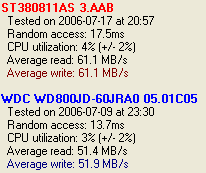
Next, we ran another popular benchmark from FutureMark, called PC Mark 05 (v1.1.0). We have three scores: one with the Seagate drive in compatibility mode (SATA), one with SATA2 enabled (jumper removed) and the third for the WD drive.
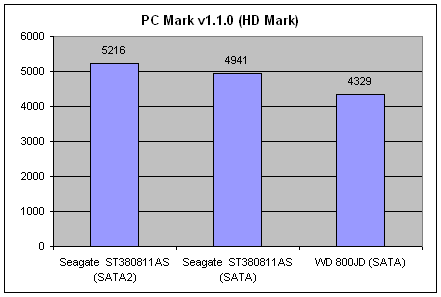
The Seagate drive with SATA2 enabled achieved the highest score of 5216 marks, while the WD 800JD managed 4329 points. You can view the test details for each: Seagate SATA, Seagate SATA2, WD.
Next, we fired up Sisoft Sandra 2007. This software can compare the current devices performance against other, pre-tested devices so that you can get a rough idea about its relative performance. Putting it through the Physical Disks Test, we got 67MB/sec with 18ms Random Access Time, while the WD800JD scored 55MB/sec and 14ms.
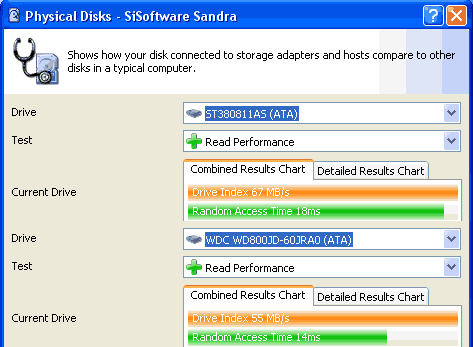
For the last benchmark, we used PassMark Performance Test 6.0, which includes several tests for HDD drives. The results are given in the following table. As was expected, the highest score was with the Seagate drive using the SATA2 interface, however the WD800JD, due to its lower seek times, gets a nice score in the "Random Seek + RW" test.

Passing to the advanced tests, we can run several pre-defined tests that include both reading and writing operations at the same time, to simulate several environments (Workstation, Database, Server). By using the included Workstation template, we logged the following scores:
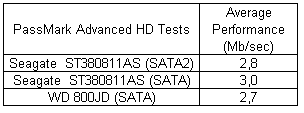
For a typical workstation profile, the best score was achieved with the Seagate drive using the SATA interface, surprisingly enough. The Seagate with SATA2 gets second place with 2.8Mb/sec, while the WD 800JD was not very far behind with 2.7Mb/sec. Looking at the two I/O graphs, the Seagate drive reaches a peak of 3.8Mb/sec, but the high performance margin of 1.3Mb/sec keeps the average throughput to no more than 3.0Mb/sec.
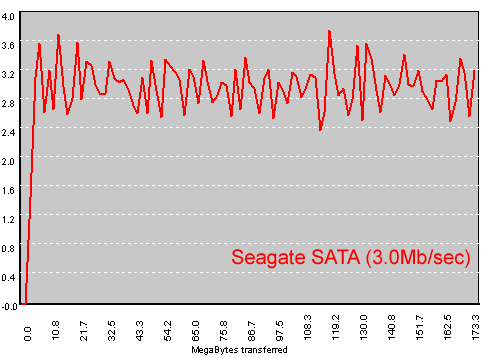
The WD drive on the other hand, reached a peak of 3.0Mb/sec with a performance margin of only 0.6Mb/sec, due to its better seek times.
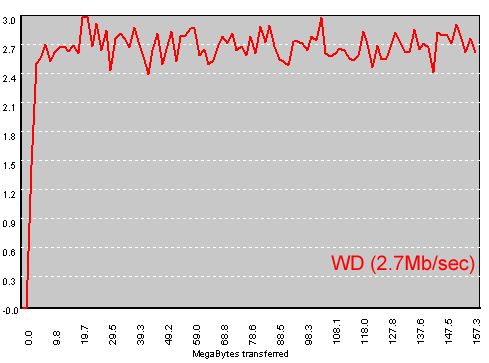
Lastly, we would like to comment on the temperatures of both drives. The WD drive ran at 27°C, while the Seagate at 33°C (idle mode). The noise from both drives is relatively low, so there should be no complaints there.





